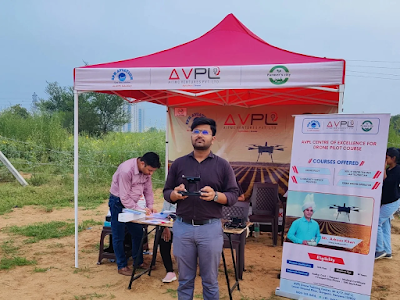
2024
Make Career Flying Drones!
Drones — whether they are land-based, underwater, or unmanned aerial vehicles (UAVs) — offer numerous benefits to both teachers and students. UAVs, in particular, are excellent complementary tools for STEM education, enhancing student engagement, knowledge retention, and collaborative learning. Teachers benefit from quality resources like coding software with professionally designed lessons. Despite being a form of advanced technology, drones are approachable for students at various educational levels, making complex concepts more digestible.
Bridging the Gap Between Technology Use and Creation
While students today are digital natives, their interaction with technology often does not extend beyond usage. They lack innate knowledge of coding, programming, or engineering — skills that must be taught. Integrating drones into the classroom helps bridge this gap. The education sector recognizes that drones are revolutionizing many industries, and understanding this technology is crucial for students aiming to succeed post-graduation. Schools, colleges, and universities that incorporate UAVs into their courses have a distinct competitive advantage in attracting top students.
Simplifying Complex Concepts Through Practical Learning
Traditional methods of teaching complex concepts like the physics of flight can be challenging. However, using drones for hands-on learning can simplify these concepts. For instance, understanding the principles of lift and drag becomes more intuitive when students see these forces in action while flying a drone. Additionally, drones are excellent for teaching design fundamentals. Using 3D printers, students can experiment with drone components like propellers, observing how design changes impact performance.
Integrating Programming into Classroom Activities
Drones bring programming into the classroom in an engaging way. Several high-quality apps and programs are available to teach coding through UAS. Some allow for multiple tasks with coding instructions, while others enable the drone to autonomously execute tasks. Younger students can use drag-and-drop code blocks to control the drone, providing an early introduction to programming concepts.
Exploring Artistic Perspectives with Drones
Drones offer new artistic perspectives, particularly in photography and videography. They allow students to see the world from different angles, which can be used in various subjects. For example, aerial photography can aid in teaching map-making, learning new languages, or illustrating mathematical concepts.
Fostering Individual and Group Learning
Drones are effective tools for both individual and group learning. Individually, students gain confidence and a sense of responsibility. In groups, students learn teamwork as they collaborate to design, build, program, and fly a drone. With proper guidance, drones can be seamlessly integrated into the classroom, offering significant benefits, especially in STEM curricula.
Diverse Applications of Drones in Education
Drones have various educational applications, including:
Geography: Using multispectral mapping cameras for flow analysis.
Geology: Observing rock formations, recording coastal erosion, and using LIDAR.
Agricultural Research: Precision farming techniques, crop spraying, husbandry, and observation.
Surveying/Mapping: Teaching new techniques with Pix4D for creating detailed 3D models and maps.
Environmental Studies: Using air emission sensors for pollution analysis and documenting environmental issues.
Marine Research: Monitoring marine mammals, sampling flora/fauna, and recording environmental data.
Engineering: Offering unique perspectives on engineering projects and drone design.
Media: Enabling media students to produce high-quality films with drone-mounted cameras.
Preparing Students for Future Careers
Incorporating drones into college courses provides students with a significant advantage. The UAV industry is expected to grow exponentially, and companies will seek graduates proficient in drone technology. Drones enhance learning experiences and help break the monotony of traditional education, making learning more enjoyable for students and teachers.
Conclusion
At SPH Aviation, we believe in the transformative power of drones in education. By integrating UAV technology into our training programs, we prepare students for the future, equipping them with the skills needed to excel in various industries. Explore our courses and join us in shaping the future of education with drones.
For more information and to enroll in our courses, visit our website or contact us at info@sphaviation.com or +91 96541 13661.
